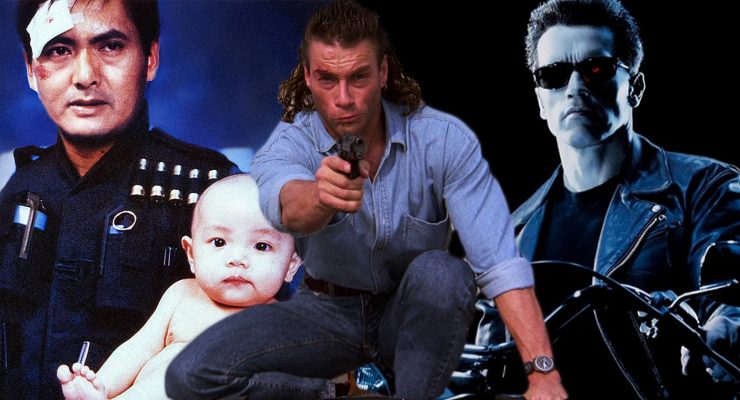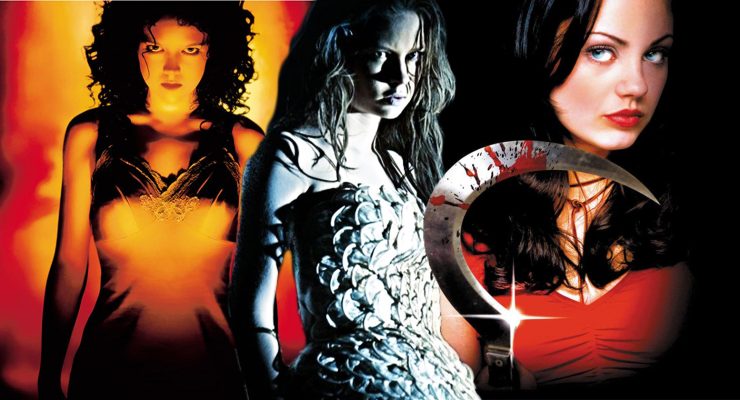Heavy Metal, 1981.
Directed by Gerald Potterton.
Featuring the voice talents of Rodger Bumpass, Jackie Burroughs, John Candy, Joe Flaherty, Don Francks, Martin Lavut, Marilyn Lightstone, Eugene Levy, Alice Playten, Harold Ramis, Susan Roman, Richard Romanus, August Schellenberg, John Vernon, and Zal Yanovsky.
SYNOPSIS:
Cult classic animated movie Heavy Metal makes its 4K debut with a new retrospective bonus feature, along with the film on Blu-ray that’s a port of the original high-def disc, complete with the extras it had at the time. The sequel, Heavy Metal 2000, is also included on a Blu-ray with a few bonus features, and you’ll find codes for digital copies of both movies.
Revisiting Heavy Metal for the first time in many years for this review, I’ll admit I cringed a bit when watching its portrayals of women. The film is very much a product of its era, when fantasy and science-fiction movies and comic books were full of scantily-clad women who resort to sex to get what they want. Sure, there were exceptions to that rule, but the Heavy Metal magazine that was the basis for the animated film was squarely in a male-dominated camp.
Taking its cue from characters and stories created by such luminaries as Richard Corben, Angus McKie, Dan O’Bannon, and Bernie Wrightson, Heavy Metal is an anthology film whose stories are connected by the presence of an evil green floating orb known as Loc-Nar. The framing story involves a girl whose astronaut father brings Loc-Nar home, only to have it kill him and terrorize her. The conceit is that the orb is showing the girl its travels through other planets before doing what it wants to her, unless she can end its evil reign.
The animation in the film is admittedly rough, even on this new 4K disc released by Sony, and some of it seems to have been heavily influenced by the artist Moebius, whose work was also a staple of the Heavy Metal magazine. The animation team used rotoscoping for many shots, a low-budget technique that consists of filming live-action actors and then tracing the images by hand – the animator Ralph Bakshi used it for many of his films of that era too.
However, one of the big attractions of Heavy Metal at the time was its soundtrack, which features songs by Blue Oyster Cult, Black Sabbath, Journey, Cheap Trick, Devo, and others who were in their heyday back then. That, combined with the fact that there weren’t a lot of adult-oriented animated films in the 70s and 80s, led to the film becoming a cult classic over the years, despite its lukewarm reception by critics of the time. Personally, I can enjoy the music and the animation while putting a big asterisk on the experience given its crude and juvenile approach to the subject matter.
Its status as a cult classic eventually led to a sequel, Heavy Metal 2000, that Sony also included with this release, albeit only on a Blu-ray platter. In addition, you’ll find a copy of Heavy Metal on Blu-ray with bonus features as well as codes for digital copies of both movies. Heavy Metal 2000 is more of the same in terms of the gratuitous sex and violence, although the animation is cleaner and there’s one storyline, rather than the anthology approach. Overall, though, it doesn’t live up to the expectations set by the original.
The bulk of the bonus features in this SteelBook edition pertain to Heavy Metal, including a new nine-minute look-back with interviews from Ivan Reitman (who produced the movie and who died recently, unfortunately), filmmaker Kevin Smith, actor Norman Reedus, and others. It’s found only on the 4K platter, while the rest of the bonus features are on the Blu-ray, which I assume Sony did so they could simply reissue the original Blu-ray.
On the 1080p disc, you’ll find the following bonus items:
- Heavy Metal rough cut: This is a preliminary version of the film that alternates between black-and-white storyboards and rough animated sequences. You can watch it with or without a commentary track by Carl Macek, who wrote books about the magazine and the movie. He gives technical information about how the rough cut was used to create the final film, as well as a variety of bits of trivia.
- Imagining Heavy Metal (35.5 minutes): This documentary looks like it was originally shot for a DVD release, but it’s still worth watching as a comprehensive look back at the making of the movie. Teenage Mutant Ninja Turtles co-creator Kevin Eastman, who bought the Heavy Metal magazine in 1992 and sold it in 2014, features prominently in it, along with Reitman and various people who were involved in the making of the movie.
- Deleted scenes: These consist of an excised sequence that runs about 3.5 minutes and is represented by rough animation. There’s also an alternate version of part of the framing sequence in which the astronaut doesn’t live and instead accompanies the young girl as she experiences different stories from Loc-nar. You can watch it with or without commentary by Macek, who gives more context for what you’re viewing.
Meanwhile, here are the bonus features for Heavy Metal 2000, which look like they were originally created for a DVD release:
- Julie Strain: Super Goddess (13 minutes): Strain, who passed away last year, was married to Eastman at one time and served as the voice and visual model for the character Julie, also known as FAKK 2, in the film. This featurette is an overview of her career, which included acting in dozens of low-budget movies as well as being a model.
- Voice Talent (3.75 minutes): Strain reappears here along with her voice-over co-stars Michael Ironside and Billy Idol.
- Animation tests (1 minute): Eastman narrates some rough animation tests, explaining how they fit into the creative process for the movie.
- Animatic comparisons (11.5 minutes): This is a comparison between the storyboards and finished footage for five sequences from the film.
Flickering Myth Rating – Film: ★★★ / Movie: ★★★
Brad Cook
















